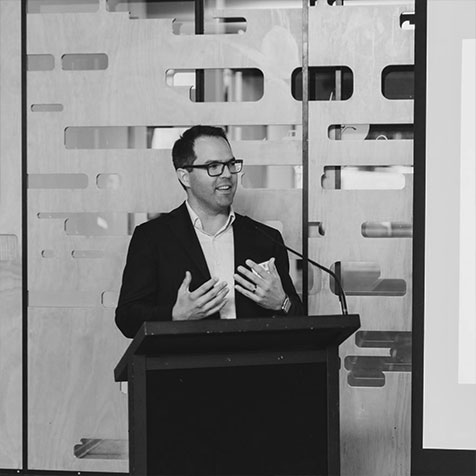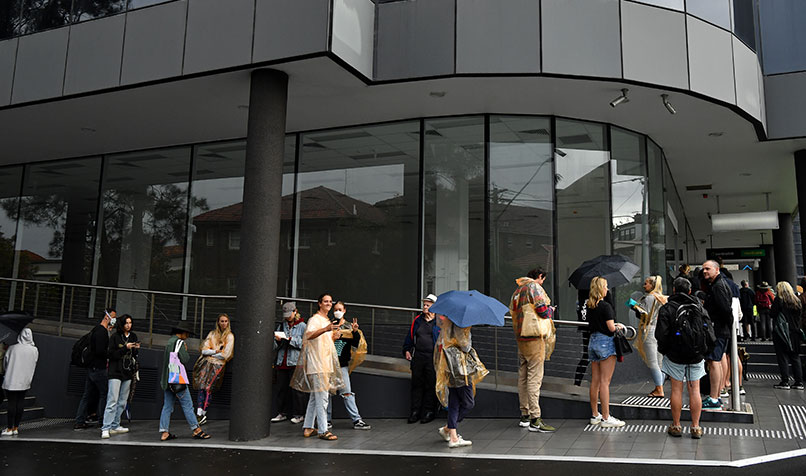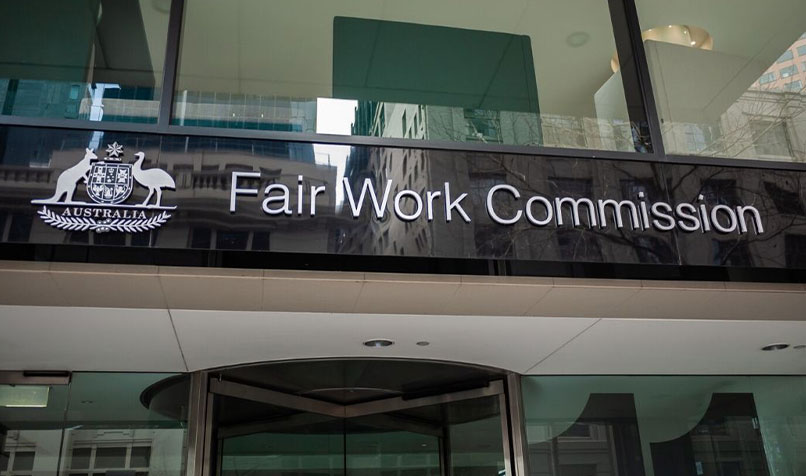Loading component...
At a glance
- Australia’s Fair Work Commission received 16,500 unfair dismissal applications between March and June 2020.
- The rise in unfair dismissal applications signals a need for businesses to ensure their processes and policies are fair and lawful.
- Strong communication and a thorough understanding of employee termination policies and procedures can go a long way in avoiding unfair dismissal claims.
By Gary Anders
Australia’s Fair Work Commission received more than 16,500 unfair dismissal applications last financial year, with lodgements between March and June 2020 up by 40 per cent on the same period the year before.
Giri Sivaraman, a principal and employment law specialist at Maurice Blackburn, says he noticed a pronounced rise in unfair dismissal actions from employees who have been accused of workplace sexual harassment.

However, the bulk of the rise coincided with the escalation of the COVID-19 pandemic and the wave of job losses that followed despite the rollout of the federal government’s JobKeeper Payment program designed to help businesses retain their employees.
“I also definitely saw a trend where people got sacked purportedly because of COVID-19, when in actual fact it was a knee-jerk reaction by their employer,” Sivaraman says.
“Employers acted as if they qualified for special dispensation afforded to them by qualifying for JobKeeper, when in fact they hadn’t, and used that as cover for sham redundancies.”
With business conditions across Australia remaining fragile, and the JobKeeper program having finished at the end of March, many expect ongoing redundancies will contribute to the elevated levels of unfair dismissal claims being lodged with the Fair Work Commission.
What is an unfair dismissal?
The Fair Work Commission may consider an employee has been unfairly dismissed if their dismissal is deemed harsh, unjust or unreasonable.
A person needs to be employed for at least six months before they can claim unfair dismissal.
Those eligible to make an unfair dismissal claim must earn below the high-income threshold of A$153,600, unless they are covered by an industry award or enterprise agreement.
For companies with fewer than 15 staff, the Small Business Fair Dismissal Code applies. Under that code, people are unable to make a claim if they are dismissed in their first 12 months of employment, if they’ve lost their job because of a business downturn, or if their role is no longer required.
An employer needs to provide reasons for a proposed dismissal and give the employee an opportunity to respond. The reason for the dismissal and the process that is followed are taken into account when determining if the dismissal was fair.
"There has to be a valid reason to terminate an employee, but even with a valid reason, a business must follow procedural fairness... procedural fairness is having a proper opportunity to know the allegation against you and to be given a chance to respond."
Valid reasons to terminate an employee can include poor performance, misconduct, dangerous behaviour, redundancy and refusing to follow instructions.
“There has to be a valid reason to terminate an employee, but even with a valid reason a business must follow procedural fairness,” Sivaraman says.
“I still have cases where someone is brought into a meeting and told their employment is being terminated and asked to respond immediately.
“That’s not procedural fairness. Procedural fairness is having a proper opportunity to know the allegation against you and to be given a chance to respond.
“Even if there’s a valid reason, and even if you’re afforded procedural fairness, sometimes it can be considered harsh.
“Even though there may be a valid reason to terminate, it’s still unfair, perhaps because of their length of service, their age or maybe they weren’t given proper training about behaviour at work or safety.”
Have policies and procedures in place
The general rise in unfair dismissal applications by individuals is a clear warning signal for businesses to be prepared to deal with potential claims.
All employers should have written employment termination policies and procedures. These should be procedurally fair, up to date, and take the Fair Work Commission considerations around unfair dismissal into account.

The policies and procedures should be clearly outlined in an employee handbook, and all employees should show, with signatures, that they have read and understood the employee handbook and the organisation’s policies and procedures, including those relating to employment termination.
“I cannot emphasise enough that managers need to follow their organisation’s written policies and procedures when it comes to terminating an employee,” says Sarah McCann-Bartlett, CEO and managing director of the Australian Human Resources Institute.
“So many organisations find themselves in hot water with the Fair Work Commission because they’ve ignored or forgotten about their own procedures.”
Nick Northcott, chief strategy officer of Australian online dispute resolution platform Immediation, says all businesses should assume they will have unfair dismissal claims brought against them.
“There’s a higher burden on employers to be proactive in thinking about how they’re going to handle a dispute, because it is going to happen at some point if you’re an employer,” he says.
“The bigger you are, the higher the risk, and the higher the burden on you to put in place systems, structures and processes to manage things effectively.”
"So many organisations find themselves in hot water with the Fair Work Commission because they've ignored or forgotten about their own procedures."
Northcott says factors businesses should be considering are their employee structure, their culture and the level of trust in management by employees.

“The lower that level of trust, the more likely you’re going to end up in dispute,” he says.
“Something that employers can do right now is build that level of trust. Questions to consider include: how often do you communicate with your employees, what messages do you give them and how fair are you being in that employment relationship when it comes to factors like pay?
“When you find yourself in a dispute, how you respond is critical.
“One pathway might be, an employee makes a complaint and the first step the company takes is to ring their lawyer and end up in a very defensive, combative mode of trying to protect the company.
“The alternative approach is much more open, where you sit down and talk with people about what exactly the issues are, understand their perspective deeply, and then try to find a pathway through to resolution.”
McCann-Bartlett agrees. “High-quality and frequent communication goes a long way when terminating employees. If employees understand why the termination is valid, if they are clear on what the process and next steps will be, and are treated with fairness and respect, then the process is more likely to go smoothly for everyone.”
Going to mediation

Northcott points out that if a complaint is lodged with the Fair Work Commission, it will ultimately end up at the mediation table as part of the process.
He says having some form of mediation as soon as a complaint is raised by an employee is highly beneficial for all parties concerned.
“If your organisation has a lower level of trust, then using third-party facilitators or mediators can be really valuable in that process.
“Occasionally it’s appropriate to use an arbitrator or an expert determinator. There are many different ways to resolve disputes, and unfortunately what we often see is employers don’t necessarily stand back when they are in that position and ask, ‘What’s the right tool to use for this situation – is it mediation externally, is it arbitration?’
“The default pathway is what people typically go for, and they don’t necessarily engage early enough before the other party gets so aggrieved that they call a lawyer and make a claim.”
Northcott says early intervention, often through the process of mediation in the workplace setting, is proven to reduce costs and the time it takes to reach a resolution, not to mention typically being much less stressful than a long, drawn out litigation.
Furthermore, he says going to mediation doesn’t mean an employer is “giving in” to an employee’s demands.
“Let’s say someone is trying to strong-arm you, where people come to the table when you’re making a legitimate business restructure and say, ‘You’ve done this for a reason, and I want to extract some money out of you’.
Often people try to test that scenario in the public domain, which can be very reputationally damaging.
“Testing this same scenario in the private domain with a mediator can provide an opportunity for the employer to look someone in the eye and say, ‘I’m not going to give in, I’m not going to relent, this is a legitimate business decision, this is why I made this decision, and if you choose to come at me on this I’m going to hold firm’.
“Likewise, for employees it’s an opportunity to privately communicate the issues to decision-makers at their employer and give them an opportunity to remedy the situation.
“The outcome of mediation isn’t always settling and paying the other side. It’s a voluntary process for people to put forward their views and seek compromise, but it doesn’t necessarily mean giving in.”
A rise in external investigations

Sivaraman says he’s noticed an increase in businesses using external investigators when dealing with unfair dismissal claims.
“While employers want to move on issues, there seems to be a trend towards engaging external workplace investigators. In the past, you’d find investigations conducted internally through people and culture teams.
“I think it’s a combination of wanting to outsource responsibility to some degree and say, ‘We’re just acting on the findings of the investigator’, to wanting to give the impression of impartiality.”
Northcott says that, where historically many complaints were settled behind the scenes, more people want to take a public stance.
His advice is to nip situations in the bud before they become too big to deal with.
“My advice to both parties – employees and employers – is that situations are often best resolved by having constructive discussions between all parties.”

